If you are looking for the ultimate solar and battery system, whether on or off the grid, then in my opinion you should build it around the Selectronic SP PRO inverter. It is in a class of its own. I mean that in more ways than one, but you’ll have to indulge me while I explain. My personal favourite battery inverter, the Selectronic SP PRO is an Australian-made grid forming inverter that can equally be used as a grid hybrid or stand-alone supply.
Better than a Tesla Powerwall
The performance you can take for granted from an SP Pro simply isn’t supported by a Powerwall. It’s not a soft-roader SUV that might get you through a sticky situation, it’s an army tank that ploughs through unaffected.
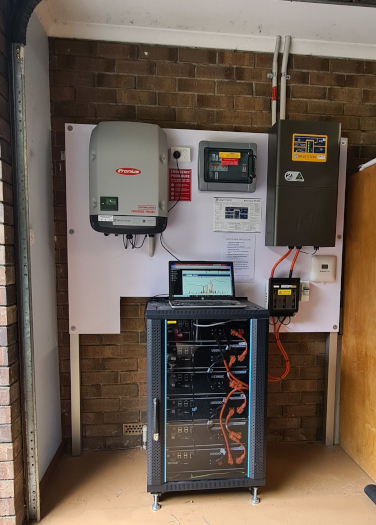
This is what a PROPER hybrid solar system looks like. Credit: Solar Depot
The tech support is brilliant, absolutely nonpareil, and the inverters themselves are the last word in reliability. They’re very flexible, conservatively rated and capable (with 240% surge capacity) to the point you need not segregate the switchboard into essential and superfluous because they will run the whole house seamlessly. This is the technology that keeps the lights on for the Royal Flying Doctor Service at Innnamincka.
More Expensive Than A Powerwall
The catch is the price. The last one I installed (with 8kW of solar, a Fronius solar inverter and 14kWh of battery) was about $30k by the time the shouting died down. Incidentally, between March and December, monitoring shows that the customer has exported 1802kWh and consumed 1548kWh with just seventeen kWh imported from the grid.
Compatible With Lots Of Batteries
Because of the nominal 48-volt input, they can have a dozen different types of battery, in small or huge capacities, and different chemistries depending on your preferences. For this write-up, I have selected the new Selectronic Select Cell 13.44kWh Lithium Iron Phosphate Batteries.
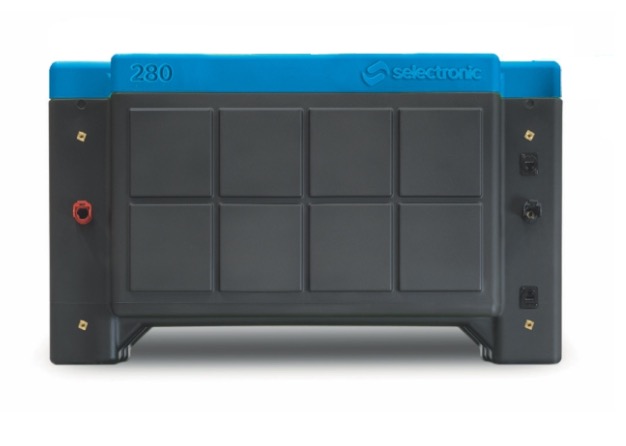
A 13 kWh Selectronic Select Cell Battery
The SP PRO can be DC-Coupled
This post is part of our series on hybrid solar inverters as Tesla Powerwall alternatives. A hybrid inverter will have solar panels and a battery both connected and managed simultaneously by one box.
Whereas the Selectronic Pro – known as a battery inverter – can also have the DC output of solar panels charging straight into the battery. You simply add an ‘MPPT Solar Charge Controller’ (and a current shunt) then your solar is available to the SP PRO via the battery input.
It’s a very flexible approach to managing a diverse hybrid system, and I recommend the superb Australian-made AERL solar regulators to complete this setup.
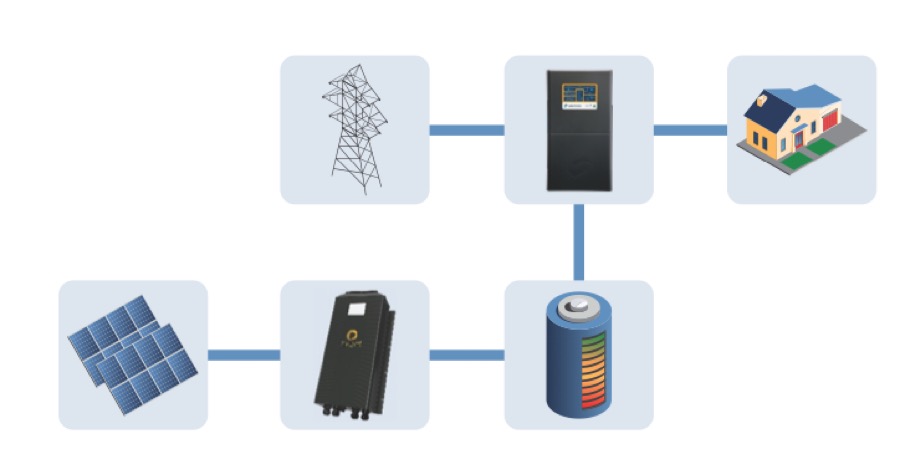
The SP Pro Is Often AC Coupled
There are also many options to connect AC-coupled solar inverters which will charge the battery, run your house or export to the grid, but unlike a one-box hybrid, Selectronic makes it easy to integrate black start capability or an auto-start generator.
The SP Pro Can Be A Single Phase Battery Inverter
If you just want to retrofit a battery to an existing solar panel array and single-phase inverter. It can do that (with full backup – of course).
Three SP Pros Can Back Up A Three Phase Solar Inverter
One problem with 3 phase solar inverters is that they are hard to use with battery backup if you want to keep the solar running when the grid goes down. If you have a ‘Selectronic Certified’ compatible solar inverter, three SP-Pros can handle this task admirably. It won’t be cheap though…
Load Control Included
There are programmable outputs to manage energy with a mind-boggling array of priorities, i.e. controlling a hot water service according to solar yield, battery state of charge, time of day or grid quality while simultaneously charging or discharging batteries according to TOU grid pricing.
All that control will involve lots of wires, and proper system integration, so a good installer will put thought into the design and cable management:
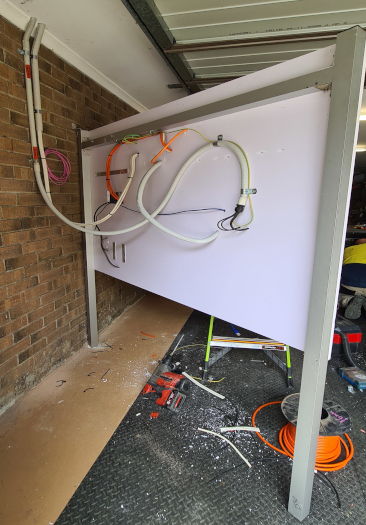
Not yet finished, but pre-building this board full of equipment and then making it swing off the wall for serviceability is a winner. Credit Solar Depot
The Best Off-Grid Inverter In The World?
Despite being a great option for grid-connected hybrid solar systems, the core market for the SP Pro has always been off-gridders. Finn reckons they are the best off-grid inverters in the world, and I concur.
One Drawback Of The Sp Pro: No Grid Export
The only drawback I have to mention is that the SP PRO has literally been put into its own class on the CEC-approved inverters website. The heavy-duty transformer topology’s inherent feature is that the latest AS4777.2 rules will prevent you from exporting energy to the grid from the battery. They’re capable, but the rules simply won’t allow it. You can export solar from the attached AC-coupled grid-connect inverters, but unfortunately, the battery can’t be used for virtual power plant applications.
However, there is a benefit. If your local grid is prone to brownouts, or SAPN are cranking up the voltage to keep a lid on everyone’s solar exports, your SP PRO will have none of it. It will simply island you from the problems outside and you can continue using your solar and battery until the grid returns to normal or you want to start a generator.
Conclusion: I Bloody Love The Sp Pro
The Selectronic SP PRO stands out as a powerful and reliable option if you want a high-performance grid-connected hybrid or off-grid solar energy system that offers unmatched reliability, flexibility, and excellent tech support. While its price tag may be steep, the features, specs, reliability, and build quality make it an investment worth considering if you prioritise long-term energy independence and resilience.
With options to DC-couple or AC-couple, load control capabilities, and compatibility with a variety of battery chemistries, the SP PRO truly sets itself apart from other hybrid inverters. Although it does not support grid export from the battery due to Australian electrical regulations, its ability to island your home during grid issues is a significant advantage.
Overall, the Selectronic SP PRO is a top-tier choice that can provide dependable energy supply in any situation, and paired with a good battery like the Select Cell is a worthy contender as a Powerwall alternative.
Selectronic SP PRO: Technical Specs
- Nominal capacity: 5kW
- Surge rating: 12kW – 30sec, 8.7kW – 1min, 7kW – 30min.
- Solar capacity: 15kW PV solar
10kW AC coupled nominal
(Virtually unlimited additional capacity via DC coupling) - Inverter Warranty: 10 years
- PV current ratings: 18a nominal – 36a short circuit
12a nominal – 24a short circuit (dependent on inverter chosen) - Solar Inverter Warranty: 5 + 5 years (Fronius)
- Battery: Select Cell 48V 13.44kWh Lithium Iron Phosphate
- Usable Capacity: 13.44 kWh
- Warranty: 8 years product – 60% retained capacity after 10 years – 35.6MWh throughput
- Throughput limit @ 1 full cycle per day: 7.25 years
- Approx retail: $6580 inverter + $14260 battery + $2732 solar inverter plus installation
- $-per-usable-kWh: $1753
- $-per-warranted-kWh :$0.66 @ 1 cycle per day / $0.33 @ 2 cycles per day
- Three-Phase option available using three SP PROs chained together. Parallel specifications available to 240kW

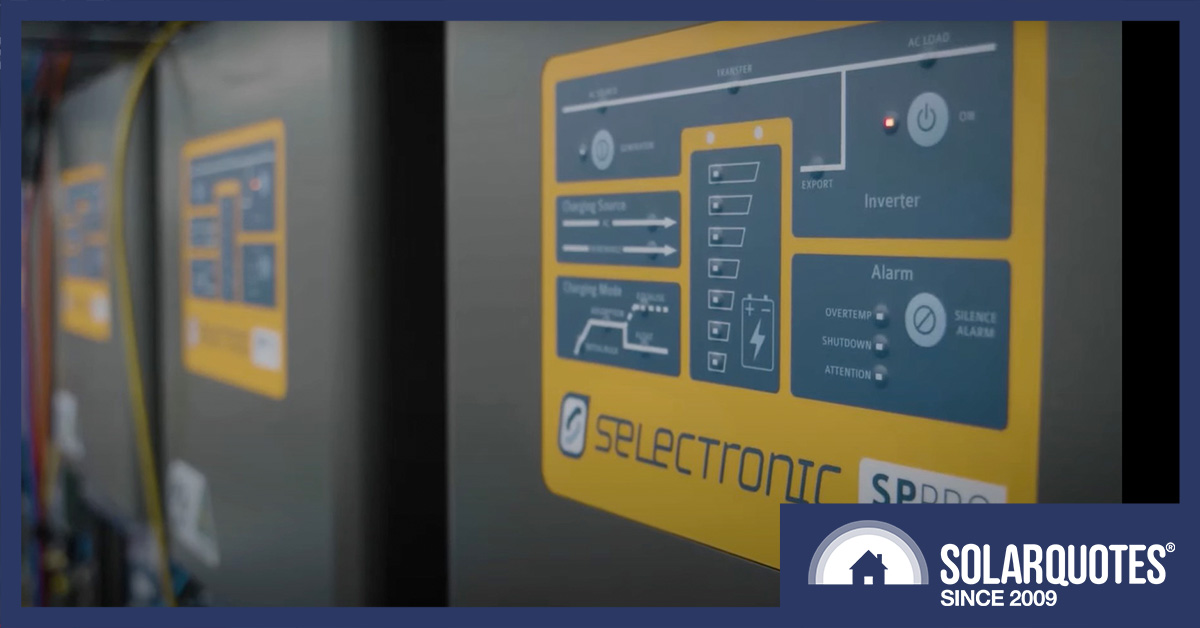
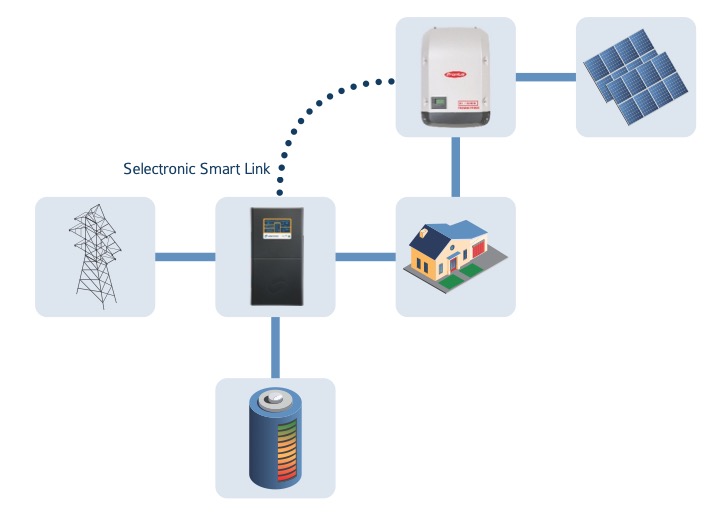
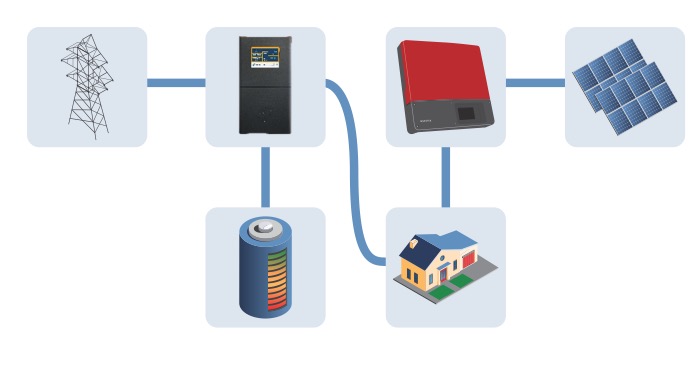
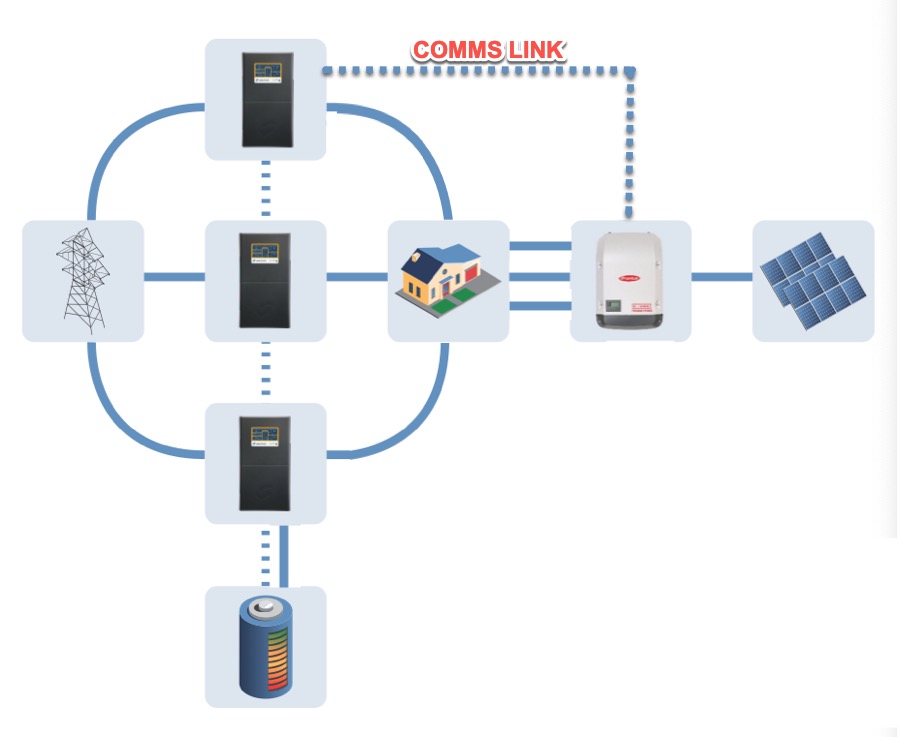
 RSS - Posts
RSS - Posts



Interesting article – thanks. What I don’t understand is why I would go down this path rather than simply buy a Sungrow SH10RT coupled to a Sungrow SBR160 battery for my three phase setup, which seems to do all of the things you mention in a single, neat package?
I appreciate you try to support the local manufacturer. This is a worthy cause. However, the best in the business and the benchmark for everyone else is not Tesla Powerwall but Victron (if we talk about inverters and chargers). And surprisingly, it looks to be cheaper than SP PRO for a better parameters model.
Talking about batteries, no one beats China-made noname battery. All Lithium cells are made in China anyway, so what is the point to pay extra to an Australian middleman for connecting cells in a pack (most probably re-branding the same Chinees noname)?
I recently upgraded my off-grid system. Inverter+battery+solar charger+small stuff = $17k for 30kWh capacity (and 10kW inverter!). That is, $566 per kWh. Three times cheaper than the system above.
Yeah Victron is cheaper Tim,
While there have been some approved in the past, last I checked they don’t have certification to be grid connected, so you simply can’t use them as a grid interactive hybrid.
I have installed Victron Multiplus as grid hybrids before, and I’ve also replaced the non-compliant ones under warranty too. That oversight resulted in customers losing their warranty coverage on LG Chem batteries, because Victron refused to do the integration testing with the replacement Multiplus II.
That said they make some nice gear and I certainly do rate them as being much better than all the other rabble you see screwed into boats and camper vans. They have great colour displays and a maddening array of options and accessories, they even AC couple with Fronius. In fact I think Victron are one of the very few available in Australia that will cope with the unique abilities and demands of a Redflow Z-cell (zinc bromide flow battery) Hence they’ve got the contract to power the rebuilt Southern Ocean Lodge on Kangaroo Island.
However before you talk about benchmarks, have a look at the ratings on your Victron.
They have a neat habit of labelling something with a model number, like Multiplus-II 48/5000/70-50.
48v input
5000VA output
70amps charging
50 amps AC pass through.
However when you read the documents and compare against a Selectronic SPMC481, you’ll notice 5kVa isn’t 5kW and the surge current is only 75%
The really telling part is that 70amps charging current though. 48v x 70a = 3.3kW. Even if we give them the benefit of the doubt and use the rated absorbtion voltage of 57v x 70a you still only get 4kW. When Victron give it a model number, that’s an aspiration, not a continuous rating.
They just don’t quite do what they say on the tin.
Everyone can check full details of Victron equipment and select the model that suits their needs. Victron have way too many models.
I used Multiplus 5kW for 8 years in AC coupled off-grid system. It can be AC coupled with any grid inverter supporting control by frequency shift. I guess these are all modern inverters.
Now I got Multiplus II 10 kW and I paid less than Selectronic 5kW above. Yes, Multiplus does not support 10kW of AC coupling but I have only 5kW GoodWe inverter on AC side, so I’m fine.
Main comment for the article: presented inverter should be compared not to Tesla Powerwall, which is a very different type of product, but to Victron. And Victron is a better product, it is a brand with much longer history, and it is cheaper.
P.S. Victron equipment is not cheap. It is bloody expensive. However, it is cheaper than presented in the article inverter.
Yes Tim,
We’re in furious agreement about the sheer number of Victron products.
Don’t get me wrong, Victron are good and definitely have their place, but in terms of being a grid interactive device, the SpPro is comparable to a Powerwall because they are approved to be network connected. Victron are not.
If Victron were better, they would have 4 relay outputs instead of one, they would have digital and analogue inputs, there would be someone in Australia to answer the phone when you need support. Instead they run what is a unique crowd sourced support forum manned mainly by enthusiasts. It’s an incredible resource they’ve built, a great following, but it’s been built on ratings that, if you’re not savvy, aren’t quite honest.
Anyway we need not argue. Let me know when Victron double their warranty, until then they need to be at very least half the price.
I have to second your opinion about Australian representatives of Victron – local support is suxxx big time. However, Victron have a very good online repository of information, good forums, and they provide a good advice if you get to contact the office in Netherlands.
I said already – old Multiplus, eight years. It is still fine and I plan to keep it as a backup for the new system. I upgraded my system just because I needed more power. All my neighbours got Victron for their systems – no one complained so far.
I don’t buy that obsession about warranty. If device works fine for one year, most probably (!) it will work for 10 years.
I got Chinees batteries – obviously no warranty at all. The first bank survived 8 years – it still goes well and I use it in the upgraded system. I got new packs so much cheaper than the battery above, that I don’t need a warranty. I will buy a replacement and it still will be cheaper overall than the battery with warranty.
… and I don’t want to open a can of stories about cases when warranty was promised (and paid) but not honoured. It might be better to know from the very beginning, that you are on your own and plan accordingly.
I’ve had Selectronic happily supply a replacement inverter for one that was a) never registered when it was installed and b) technically out of warranty anyway.
The only other unit I’ve had to replace was making a humming noise, it hadn’t failed but the warranty was honoured with no qualms whatsoever.
Three SP Pros can back up a three-phase solar inverter. Is the 120º electrical problem over? I find that strange.
Been doing three phase with Victron Multiplus I/C for years.
My thoughts exactly. When Anthony reviewed the Sungrow inverters he overlooked the 3 phase, which if you want to build a large grid connect system is where you would start.
Hi Trevor,
We haven’t overlooked anything, I assure you we’ll have a Sungrow post out in due course but I have to underline that a Selectronic is a proper grid forming inverter, whereas a Sungrow is a grid hybrid that offers some backup. They’re not really comparable.
I quite like the Sungrow offering and they’re doing some impressive things in terms of capacity and AC coupling on the backup side. You certainly won’t find much better bang for buck unless perhaps you choose Goodwe, however the main reason I mention Selectronic is that they aren’t widely known as a grid interactive machine, but they’re so ridiculously capable, those who want the best will buy one on general principal.
Ok, but.
I would prefer NOT to use lithium ion batteries – there have been too many stories, too many warnings about them burning houses down
You’re in luck Richard,
An SpPro will handle lead acid batteries with aplomb. BAE make some nice ones that will likely give you 15 years service if they’re looked after well, at least that’s been my experience. Sadly Sonnenschein have been cheapened and so binned their excellent reputation in the same line of products. You could even get some Edison Nickel Iron (NiFe) cells if you’re keen on something super durable.
Lithium-ion means NMC or NCA and can suffer from thermal runaway, while Lithium iron is LFM/LiFePo4 does not. Lead acid is nowhere near as efficient in terms of energy density. LFM’s good. Most Chinese batteries are now some form of LFM.
With all the awful stories from around the world, on lithium batteries, I’d prefer to wait and see what other researchers are able to come up with instead. The cost of electricity is minor, compared to the cost of rebuilding a house that’s burned down!
And there’s plenty of development going on out there, right now.
Understood. Personally I wouldn’t go near NMC/NCA with a 10 foot barge pool, but LFM I’d have in the lounge room! Such a shame that one chemistry has tainted the view of all lithium chemistries.
Nigel, just as an example of WHY I’m choosing to wait – because so many clever people are working on this, around the clock, and the goal posts are moving incredibly rapidly, so it would be foolish to act too soon and miss out on something great.
Have a look at breaking news on an American company called SAKUU. NOt suggesting THEY have all the answers either – but in many respects they’re miles ahead of the competition.
Thanks Nigel – my late brother was a chemical engineer, he would have known about all these things. I’m afraid I know absolutely nothing about chemistry, all I know is that I want to do whatever I can to fight climate change, but in doing it, I want to make sure it’s safe for my family. And when fire brigades all over the world start telling me these stories about things being too dangerous to have on the premises, let alone in the house . . .
People like me are being left behind. Is that really a good idea?
Anthony, I’m obviously going to have to open a file, to store all this information. This website is great! Both you and some of your other contributors seem to know a great deal more than I’ve ever come across elsewhere.
I don’t know what other people think – but I’ve been worrying about climate change since long before they announced there was a hole in the ozone layer, over the Great Southern & Antarctica – something was wrong, something was happening, and it made it impossible for me to keep suntanning from 11 am to 1 pm, like I’d been doing all my life. It started feeling as if I had fire ants all over me!
My dream is heat pump hot water heaters, smother the roof in solar panels, have a battery setup in the car port, get an EV instead of an ICE. My carbon footprint will all but vanish! I already have a Fronius thing-ummy & 18 solar panels, all the gas heaters went ages ago. Ive put film on the windows that are exposed to direct sunlight, cutting 75% of the UV hitting them. And grown climbing roses all over the north facade of the studio apartment at the rear of the property, to shield both the wall and the windows from the sun. Commonly get a difference of 5 to 10 degrees centigrade, between the outside and the inside of the house – so most of the time there’s no need to run the air con plant.
Selectronic is also my stand-out favourite. I always provide Victron and Selectronic options for my off-grid customers. Almost all choose Selectronic because the price difference is easily justifiable by the better warranty, better reputation, better support and the Aussie-made vibe.
When it comes to grid-hybrid, Victron is no longer (currently) approved.
I personally have a 2012 Series 1 SP Pro at home which is like Lazarus with a triple bypass. It started life with lead acid, but now has Powerplus lithium plus more than 3x the solar PV than it did at the start. It easily runs our 21st-century lifestyle. I love that a now 11-year-old product is compatible with new regulations and other equipment.
Thanks Tony,
It’s a case of if you know, you know, but half the reason I have waxed about Selectronic so much is that there are customers who only learn, after an expensive failure, that there is a better solution available.
People are incredulous that there are SpPros sold into Germany.
I have just finished testing the 5kw model I concur it is a tank.
I have written code for a raspberry pi that is running grafana and a postgres db.
I have a Sonnen downstream of the selectronic a 5kw growatt a 5kw fronious.
8kwh battery in the Sonnen and 6.6 kWh on the selectronic. I will be adding more storage as soon as the salt batteries are available for testing.
My dashboard shows all my systems on one screen I use modbus protocol to read all registers of interest. I would post an image but it doesn’t look like I can.
To access the dashboard whilst I am away I use tailscalevpn which is free .
Thanks AB and others for re-inforcing my impression that my 7.5kW Selectronic SPMC-482 is an excellent choice! After 15 months of off-grid operation, mine is heading for the rare category of ‘really good gear’. I’m nowhere near Dave’s competence in connecting stuff together, but with the interfaces I can easily monitor consumption and production, set a lot of options around controlling the generator, and look at settings as esoteric as the expected life of the internal fans! That level of documentation and the range of options tells me that the thing was built by engineers obsessed with durability and performance which is what I want for off-grid. When the clouds part and my panels kick in 12kW the inverter literally hums, shoveling energy into my 32 kWh battery pack – a very good feeling. I sense that the Selectronic was built with the aim of out-lasting every other bit of gear in my shed (perhaps even the Stihl chainsaws). For me that’s good value for money.
I am setting up an off-grid system in Regional Central Victoria using Selectronic SP PRO and need some help with stage 3.
Stage 1 – back shed installation, completed
3 phase, 8.8kW solar system with 24kWh battery storage
Solar Panels – 20 x 440W Canadian Solar TOPHiKu6 CS6R-440T (IEC1500V)
Inverter – 1 x Fronius Primo 4.0-1 WLAN-SCERT (4kW)
Charge controller –1 x Victron Energy SmartSolar MPPT RS 450/100 (0kW)
Battery storage – 6 x PowerPlus Energy ECO4840P (4kWh / 4kWh usable)
Hybrid off-grid inverters – 3 x Selectronic SP PRO Series 2i SPMC481-AU (Series 2i) (5kw)
Stage 2 – house installation, predicted completeion date Feb, 2025
Adding more solar panels and possible more battery modules.
Stage 3 – car connection, completion date?
Purchase EV with bidirectional battery to be used as V2L backup generator!!
Preferred option (using currently available EVs):
BYD Seal Premium: 82 kWh, LFP bidirectional battery (570km range)
System to EV
Charging rates: Three phase: NA: 7kW maximum on one phase???
Charging speeds will vary upon the capacity of the EVSE (Electric Vehicle Supply Equipment) connection.
AC charging (type 2 AC socket) 0 – 100% time:
10A (power point) approx. 42 hrs
16 or 32A (3 phase public AC EVSE) – 16A is approx.12hrs
DC charging (type CCS2 socket) 0 – 80% time:
DC Fast charging (150+kW) – 30 minutes
THIS NEXT STEP IS WHERE INFORMATION BECOMES SCARCE!
EV to system
Vehicle to battery: same as V2L ???
V2L: vehicle to load (230V power available from outlet in car)
V2H: vehicle to home, unsure of what connection is available?
Technically, I see no reason why V2L couldn’t serve as a backup generator replacement.
I have contacted 22 solar companies that say it can’t be done!
Any feedback would be appreciated.
Hi Denis,
Sounds like a great system.
As for EV charging, right now there’s no option for true V2G with 7kW in both directions. If there was it may still be problematic with an SpPro because there needs to be an integration that allows the Selectronic system to throttle off external sources. ie the SCERT part of the solar inverter.
You could have a single phase EV charger but with a BYD you’d have to throttle the EVSE down to 5kW as one of your SpPros will struggle otherwise.
Another option would be a DC fast charger. Sungrow make a 30kW unit which can be throttled down and that would be better because you could spread the load across all 3 SpPros.
Using the car as a source of AC, like a generator input is something I’d need to check out. Normally an off grid system like yours would have a 3 phase generator and I’ve never had to try using a single phase genny.
I’m confident it would be possible if your system was single phase. It may even be possible to reconfigure your whole premises so that all the SpPros are in parallel as a single phase system.
In any case you could use a HOEM device to take some of the loads off your renewable system.
https://www.solarquotes.com.au/blog/hoem-review/
thanks for the response.
I need the 3 phase to run the house (A/C, induction cooktop).
I don’t know a lot about HOEM devices, but, I assume that the HOEM device uses a standard plugin from EV to the device and it then selectively powers home appliances. So… can this be connected to the system as a “generator” to (trickle?) charge the batteries?
Hi Denis,
The HOEM device is basically an automatic generator changeover switch.
You need an EV with an onboard inverter which puts out 230vac (Think of it as a 2 or 3.6kW generator)
Plug that supply into your house and the HOEM swaps a few circuits over to run straight from the car.
Your solar hybrid inverter isn’t involved.
Hi again, Anthony
This new tech has become available overseas.
This may be an alternative to me charging the battery from the EV.
Your thoughts?:
SolarEdge unveils New Bi-Directional DC-Coupled EV Charger.
DC-coupled architecture allows simultaneous EV charging directly from PV, home battery and AC grid, enabling charging of up to 24kW
Paves way for EV batteries to function as large home storage solutions, on and off-grid.